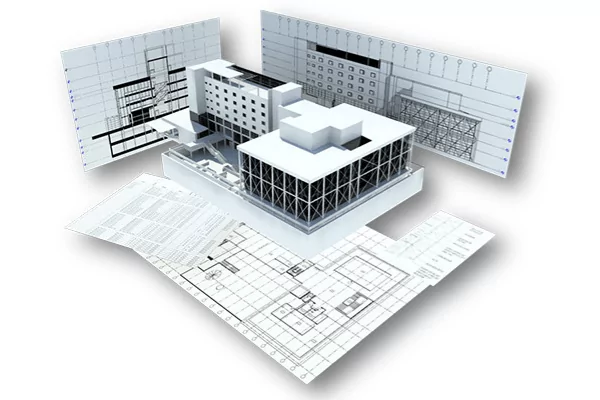The benefits of integrating BIM into your construction strategy
You would have heard me often say that BIM technology is playing a pivotal role in revolutionizing the construction industry. Adoption of this digital technology is growing in India and many countries like the UK and Germany are mandating the use of BIM for public infrastructure projects. Several known challenges in the traditional construction methods can be minimized or completely eradicated with the use of BIM. It’s not only the industry but also the academia that has taken a keen interest in the application and implementation of BIM in civil engineering, architecture, project management, operations, and facilities management.
I believe that the effective use of BIM can help in increasing the efficiency of our construction industry. It’s a widely accepted stat that a construction project takes roughly 20% longer than the initially estimated time to complete and is approximately 80% over budget. A potent BIM implementation can play a crucial role in controlling these time and project costs.
BIM is mostly considered as 3D modeling software, but in reality, it's far more than that. The seven dimensions of BIM allow us to add focus on time, cost, as-built, and sustainability. The technology helps in rectifying errors, controlling costs, efficient planning, and better operations management of a facility. This means that, apart from improving construction operations, it could play a key role in defining a sustainable and competitive construction strategy as well.
Benefits of Integrating BIM in Construction Strategy
The role of BIM in construction strategy is often debated. BIM can be considered as an extended version of the project manager in a construction project. BIM helps in integrating the different aspects of a construction project through effective communication. It can validate the design for constructability by building a visual picture. And, it can help, estimate accurate project costs and times. The seamless collaboration between the various teams is an added benefit.
The BIM model considers the entire lifecycle of a facility from design to operations along with all the required information. The virtual model of the actual facility provides an insight into the physical and logistical characteristics of the facility. The digital prototype plays a significant role in meeting the design shortcomings before the construction begins, thereby reducing the time lag occurring due to redesigning or rework during the construction phase. Let’s look into some significant benefits of integrating BIM into the construction strategy:
1. Effective communication and team building
More often than not, lack of effective communication amongst the involved parties causes errors that result in increased costs and delays in a construction project. In the absence of BIM, the interested parties work independently to achieve exclusive goals from the project. BIM unifies and integrates the architects, engineers, operations and systems management, and project management into a collaborative process. The collaboration leads to a unified and common goal definition right at the planning stage, thereby improving the chances of all the teams being aligned at each phase of construction.
2. Cost and time estimation
Time and cost are two major factors attributing to the success of a construction project. BIM model helps in estimating costs and the time required during the designing and planning phase. The model-based cost and time estimation helps in eliminating human error by providing the most accurate numbers. Getting a reliable estimate of these parameters at the construction planning stage can significantly ramp up the effectiveness of the financing and planning function and in the case of commercial real estate projects helps in driving sales.
3. Eliminating on-site redesigning and rework
The final constructed building is often quite different than its first blueprint. Every design undergoes numerous changes before the construction begins. The digital prototype of the facility provides a real-time view of the building. The visualization of the final design in the preconstruction phase allows the involved parties to analyse the constructability of the design. Without BIM, these changes are observed during the construction phase, and time is lost while reworking the design. The BIM model helps in eliminating such situations. Having an accurate picture of the facility as it is, rather than imagining the design can help drive expansion and future redevelopment strategies.
4. Cost reduction with material quantities
Calculating quantities of the raw material is crucial in any construction project. Traditionally, the consultants estimate the quantity with the help of 2D drawings and thumb rules, which often results in over or under-estimation. The quantity take-offs with BIM are far more accurate and precise, which helps in reducing costs due to wastage or lack of raw materials. Being able to procure materials with confidence can help the procurement teams get better deals and assure a more predictable supply of materials over the duration of the project.
5. Building handover and operations management
The most important thing during handing over of a building is the building information which plays an essential role in the operations management of the facility. The digitally centralized information in the BIM model is easily accessible to the operations management team, unlike the traditional way where one needs to manage a bunch of files and papers making it challenging to access information during an emergency or crisis. This has strategic implications on issues like driving efficient energy usage, green practices, and safety management.
I guess the point I’m making is that BIM has more to offer than just faster and more efficient construction. The benefits of integrating BIM into your construction strategy are aplenty. I hope that the widespread adoption of BIM technology will revolutionize the construction industry by raising the bar a notch higher for all of us.

